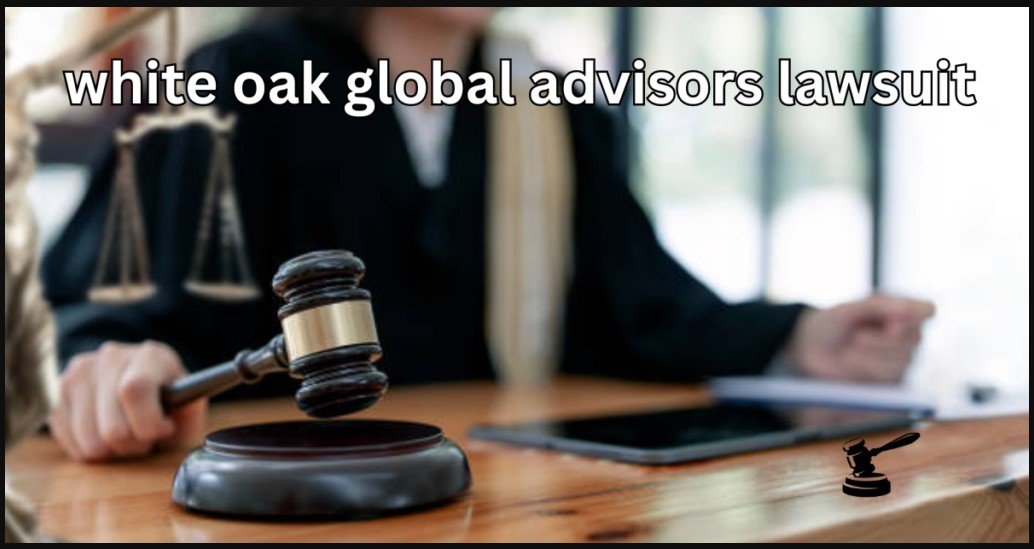Introduction to White Oak Global Advisors Lawsuit
The financial world is no stranger to turbulence.
Yet, when a prominent player like White Oak Global Advisors finds itself embroiled in a lawsuit, it raises eyebrows and stirs conversations across the industry.
The recent legal drama surrounding this investment firm has captured attention and sparked debates about trust, accountability, and the future of investment practices.
As we delve into the details of this case, it’s essential to understand what led to these developments and how they may influence investors moving forward.
Buckle up as we explore the intricacies of the White Oak Global Advisors lawsuit settlement and its broader implications for everyone involved.
Explanation of the Lawsuit
The lawsuit against White Oak Global Advisors centers around allegations of improper practices in their investment strategies. Plaintiffs claim the firm mismanaged funds, leading to significant financial losses for investors.
Key complaints include misleading information about risk levels associated with various investments. Investors must be adequately informed about potential downsides before committing their capital.
Additionally, there are accusations that White Oak prioritized profits over fiduciary duty. This has raised serious questions regarding ethical standards within the organization and the broader industry.
As details emerged during legal proceedings, stakeholders’ concerns about transparency and accountability gained traction.
The case highlights critical issues facing investment firms today, prompting a closer examination of operational policies across the sector.
Details of the Settlement
The settlement reached in the White Oak Global Advisors lawsuit has sparked significant interest.
Under the terms, White Oak has agreed to pay a substantial sum. This amount addresses claims made by affected parties while preventing future disputes.
Additionally, part of the settlement includes commitments to enhance compliance measures. These changes are designed to ensure adherence to industry regulations moving forward.
Aspects of transparency will also be prioritized. The firm is expected to provide regular updates on its operations and investment practices.
This agreement marks a pivotal moment for White Oak and its stakeholders, signaling a new chapter focused on accountability and improvement within the financial sector.
Impact on the Industry and Investors
The lawsuit settlement involving White Oak Global Advisors has ripples throughout the investment industry. Such legal actions can shake investor confidence, increasing scrutiny of similar firms.
Investors are now more vigilant when choosing asset managers. They weigh not just performance but also ethical practices and compliance history.
Additionally, this case may spur regulatory bodies to tighten oversight. The focus on transparency and accountability within financial institutions is likely to intensify.
Many firms will reassess their governance structures in light of these developments. A proactive approach could mitigate risks associated with potential litigation.
For investors, it serves as a reminder that due diligence is essential. Understanding an advisory firm’s operational integrity has never been more critical in today’s complex market landscape.
Lessons Learned from the Lawsuit
The White Oak Global Advisors lawsuit serves as a stark reminder of the complexities within the financial sector. Transparency is paramount; stakeholders must prioritize clear communication to avoid misunderstandings.
Investors should always conduct thorough due diligence before engaging with any firm. Relying solely on past performance can lead to significant pitfalls. The importance of independent research can’t be overstated.
Moreover, this case underscores investment firms’ need for robust compliance frameworks. Regular audits and checks can help identify potential issues before they escalate into legal challenges.
It highlights how quickly reputations can change in finance. Companies need to proactively manage their public image and address concerns head-on rather than wait for problems to surface.
Future Outlook for White Oak Global Advisors Lawsuit
The future for White Oak Global Advisors post-lawsuit is a nuanced landscape. The settlement has provided some clarity, yet uncertainties remain.
Investors may approach the firm with cautious optimism. Trust must be rebuilt through transparent operations and consistent communication. Restoring confidence takes time and effort.
Regulatory scrutiny could increase within the industry as firms reassess their practices in light of this case. Compliance and risk management will likely become top priorities.
Furthermore, competitors might seize this opportunity to enhance their market position by showcasing more robust governance frameworks. Innovation in investor relations strategies could emerge as firms strive to differentiate themselves.
White Oak’s ability to adapt will shape its trajectory in the future. Stakeholders watch closely as the firm navigates these new challenges while aiming for growth and stability in an evolving financial environment.
Conclusion
The recent lawsuit against White Oak Global Advisors has captured the attention of both industry insiders and everyday investors.
The implications of this case extend beyond one firm, resonating across the financial landscape. It underscores the importance of transparency and accountability in investment practices.
While settlements may bring closure to legal battles, they often leave lingering questions about corporate governance and investor trust.
As stakeholders reflect on these developments, it’s clear that vigilance is necessary. Investors must remain informed and proactive in safeguarding their interests.
White Oak’s future hinges on its ability to rebuild credibility while navigating a changing regulatory environment. The lessons learned from this incident could pave the way for more robust safeguards within the industry.
As we progress, continuous dialogue between firms and their clients will be essential for fostering trust in an evolving market landscape.
